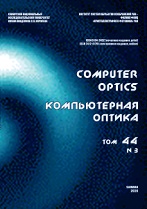|
Эта публикация цитируется в 1 научной статье (всего в 1 статье)
ОБРАБОТКА ИЗОБРАЖЕНИЙ, РАСПОЗНАВАНИЕ ОБРАЗОВ
Central Russia heavy metal contamination model based on satellite imagery and machine learning
A. V. Uzhinskiy, K. N. Vergel
Joint Institute for Nuclear Research, Dubna, Moscow region
Аннотация:
Atmospheric heavy metal contamination is a real threat to human health. In this work, we examined several models trained on in situ data and indices got from satellite images. During 2018-2019, 281 samples of naturally growing mosses were collected in the Vladimir, Yaroslavl, and Moscow regions in Russia. The samples were analyzed using Neutron Activation Analysis to get the contamination levels of 18 heavy metals. The Google Earth Engine platform was used to calculate indices from satellite images that represent summarized information about sampling sites. Statistical and neural models were trained on in situ data and the indices. We focused on the classification task with 8 levels of contamination and used balancing techniques to extend the training data. Three approaches were tested: variations of gradient boosting, multilayer perceptron, and Siamese networks. All these approaches produced results with minute differences, making it difficult to judge which one is better in terms of accuracy and graphical outputs. Promising results were shown for 9 heavy metals with an overall accuracy exceeding 89%. Al, Fe, and Sb contamination was predicted for 3,000 and 12,100 grid nodes on a 500 km$^2$ area in the Central Russia region for 2019 and 2020. The results, methods, and perspectives of the adopted approach of using satellite data together with machine learning for HM contamination prediction are presented.
Ключевые слова:
heavy metal contamination, modeling, air pollution, biomonitors, prediction, satellite imagery, machine learning, neural architectures, Siamese neural networks
Поступила в редакцию: 20.04.2022
Принята в печать: 10.08.2022
Образец цитирования:
A. V. Uzhinskiy, K. N. Vergel, “Central Russia heavy metal contamination model based on satellite imagery and machine learning”, Компьютерная оптика, 47:1 (2023), 137–151
Образцы ссылок на эту страницу:
https://www.mathnet.ru/rus/co1111 https://www.mathnet.ru/rus/co/v47/i1/p137
|

| Статистика просмотров: |
| Страница аннотации: | 17 | | PDF полного текста: | 6 | | Список литературы: | 13 |
|




 Обратная связь:
Обратная связь: Пользовательское соглашение
Пользовательское соглашение
 Регистрация посетителей портала
Регистрация посетителей портала Логотипы
Логотипы








 Цитирование в формате
Цитирование в формате 
